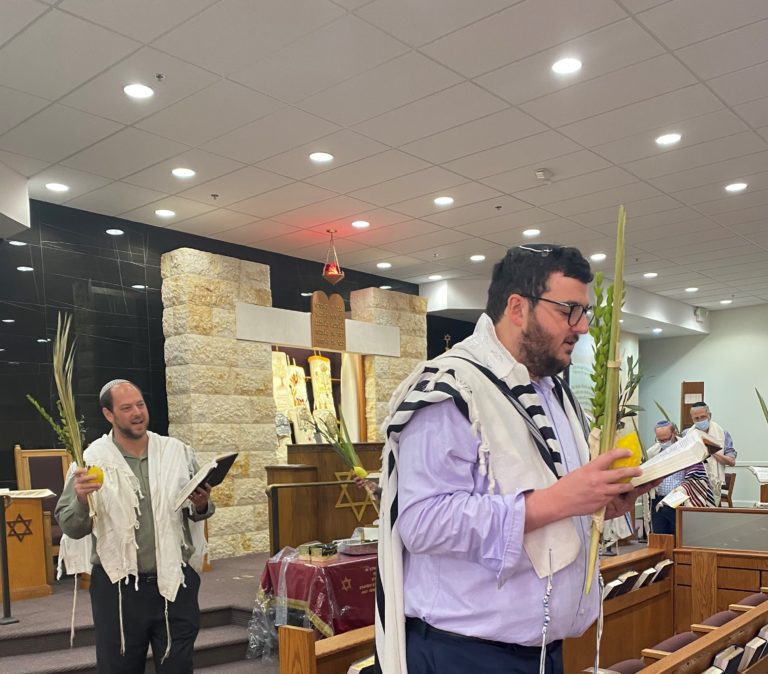Moses Montefiore Anshe Emunah Hebrew Congregation’s rabbinic residency program is actively creating the next generation of rabbinic leaders in America.
“It’s a post smicha internship, or I would call it a fellowship, to give new rabbis real life experience and better prepare them to enter their own careers as pulpit rabbis,” said Rabbi Yerachmiel Shapiro.
Shapiro had the idea for the program around six years ago, he said, at a time when MMAE was seeing significant expansion. Feeling a bit overwhelmed, he took the advice of a rabbi he knew from Nashville, Tenn., to hire an assistant rabbi.
“When I was thinking about it, I said, ‘How can we do this in a way that really it’s something interesting and new, rather than just the regular assistant rabbi for the shul?’” Shapiro said. “And I realized that there really is no official program out there to help train rabbis fresh out of rabbinical school.”
He talked the matter over with some of his congregants. One of them, a teacher, told Shapiro that studies had shown that teachers who begin their careers with an internship have better career outcomes and stay in the teaching field for much longer, he said.
“I guess if you train under a master teacher, you’re going to develop strategies that make it so that you are successful in your career,” Shapiro said. “So I thought that really says a lot about what I could provide to a new rabbi.”
Some might wonder how MMAE’s rabbinic residency program is different from the more typical practice of serving as an associate rabbi for a number of years before possibly becoming a senior rabbi later, either at that synagogue or somewhere else. Jeff Forman, president of MMAE, explained that at other synagogues it is not uncommon for an associate rabbi to stay an associate rabbi a decade or more, or for an associate rabbi to be less than open with their shul if they are actively pursuing a position elsewhere. What separates MMAE’s program is that it is specifically designed to groom the rabbinic resident for a senior rabbi position somewhere else, creating more openness in the process.
“In other words, if I’m the associate rabbi at ‘Congregation Shalom,’ and I hear about a senior rabbi position in Detroit, I may not want to tell anybody I’m applying for that, because if I don’t get the job and they say, ‘Hey look, you’re looking around, see you later,’” Forman said.
“If I’m the rabbinic resident at MMAE, we’re going to call the guy in Detroit and say, ‘Hey listen, Forman’s your guy,’” Forman continued. “I don’t have to sneak around, I don’t have to do this clandestinely, because that is the goal of
the program.”
The three-year program is meant specifically for graduates of Yeshivat Chovevei Torah, the rabbinical school that Shapiro attended. Much of the residency program involves these new rabbis learning oratory, teaching and people skills, learning how to speak off the cuff, how to handle life cycle events such as weddings, funerals and b’nai mitzvahs and handling pastoral visits to hospitals or hospices.
“In rabbinical school, you learn what is the process of doing the last prayers,” Shapiro said. “But only as a rabbi in the field will you actually have the connection to a family to have that experience, and to make sure that you are psychologically mature enough to be present for a family as their loved one is passing away.”
So far, Rabbis Joel Dinin and Seth Herstic have successfully completed the program. Dinin went on to become a rabbi at Lake Park Synagogue in Milwaukee, Wis., while Herstic became a teacher at a yeshiva in New York, Forman said.
Currently, Rabbi Eli Finkelstein is in MMAE’s residency program, having started in August.
To anyone interested in pursuing a similar program, Finkelstein offered some advice.
“Say yes to things,” Finkelstein said. “Always be open to take part, to be involved, to take the opportunity to learn things.”
The article first appeared in the Baltimore Jewish Times.



